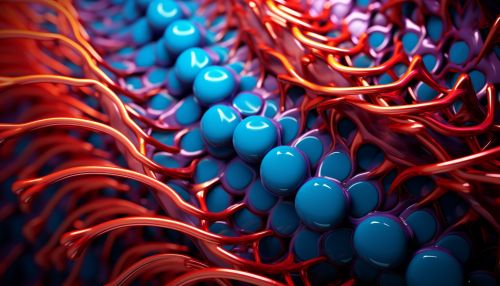Membrane Proteins in Cellular Signaling
Introduction
Membrane proteins are integral components of the cellular membrane, playing crucial roles in various cellular functions, including cellular signaling. They are a diverse group of proteins, with varying structures and functions, that interact with the cellular membrane to facilitate communication between cells and their environment.


Structure of Membrane Proteins
Membrane proteins are typically composed of one or more polypeptides that span the lipid bilayer of the cell membrane. These proteins can be classified into two main types: integral membrane proteins and peripheral membrane proteins. Integral membrane proteins are permanently attached to the membrane and often span the entire width of the lipid bilayer. They have hydrophobic regions that interact with the fatty acid chains of the phospholipids in the membrane. On the other hand, peripheral membrane proteins are temporarily attached to the lipid bilayer or to integral proteins by a combination of hydrophobic, electrostatic, and other non-covalent interactions.
Role in Cellular Signaling
Membrane proteins play a vital role in cellular signaling, acting as receptors that receive signals from the extracellular environment and transmit them into the cell. These signals can be in the form of hormones, neurotransmitters, or other signaling molecules. The binding of a signaling molecule to a membrane protein receptor triggers a series of events within the cell, leading to a specific response. This process is known as signal transduction.
Signal Transduction
Signal transduction involves the conversion of a signal from one form to another. In cellular signaling, this often involves the conversion of a chemical signal, such as a hormone or neurotransmitter, into a series of biochemical events inside the cell. Membrane proteins play a crucial role in this process, acting as receptors that bind to the signaling molecule and initiate a cascade of intracellular events.
One of the most common types of signal transduction involves G-protein coupled receptors (GPCRs). GPCRs are a large family of membrane proteins that respond to a variety of signals, including hormones, neurotransmitters, and light. When a signaling molecule binds to a GPCR, it causes a conformational change in the receptor that allows it to activate a G protein. The activated G protein then triggers a series of events inside the cell, leading to a specific cellular response.
Membrane Protein Dysfunction and Disease
Dysfunction of membrane proteins can lead to a variety of diseases. For example, mutations in GPCRs can result in diseases such as retinitis pigmentosa, a genetic disorder that causes progressive vision loss. Similarly, mutations in ion channel proteins can lead to diseases such as cystic fibrosis and epilepsy. Understanding the structure and function of membrane proteins is therefore crucial for the development of treatments for these and other diseases.
Conclusion
Membrane proteins play a crucial role in cellular signaling, acting as receptors that transmit signals from the extracellular environment into the cell. They are involved in a wide range of cellular processes, from hormone signaling to immune responses, and their dysfunction can lead to a variety of diseases. Understanding the structure and function of these proteins is therefore of great importance in biology and medicine.
